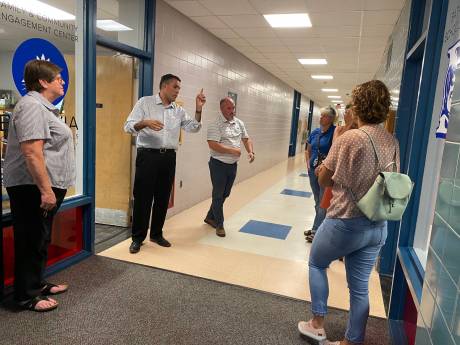
City school board members went back to school Monday evening.
They took a tour of the work-in-progress at Robert Morris — closed a decade ago as an elementary site — which will now be operating in full force this year for pre-school and universal pre-kindergarten students after a $225,000 investment so far.
“Pre-school numbers have almost doubled,” Superintendent Jason Smith said during a presentation before the tour. “We had a hard time finding programs to service these students.”
A Little History
District officials decided to close Robert Morris Elementary School in 2012 after it was deemed a savings measure and more efficient to consolidate and students and teachers at to Jackson Primary and John Kennedy Intermediate. The building was used either for district needs (public relations, information technology), or rented out to various organizations, including BOCES, a daycare, 56 Harvester Center, and Arc.
Pre-school numbers began to rise, and the need for space rose with them, Smith said. That resulted in rethinking the use of Robert Morris. After receiving comments that Jackson Primary was getting pretty tight due to increased enrollments, the district bumped up first grade’s eight sections to 10, which then created a need for additional space at Jackson. Four UPK sections are therefore being moved to Robert Morris.
Current Times
Using state funding and grant monies, the new offerings have shifted the physical and philosophical layout of Robert Morris at the corner of Union Street and Richmond Avenue. As Trisha Finnigan, executive director of staff development and operations, said, “we’re using every nook and cranny” of the three-floor building to make the best use of all areas.
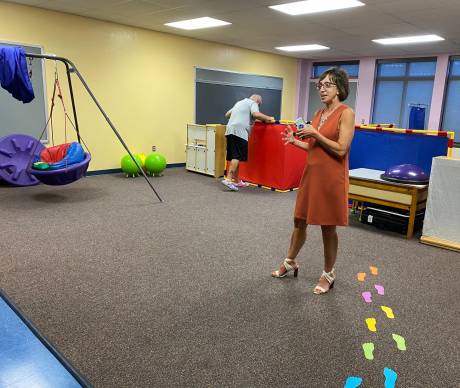
The main entrance will be on the east side of the school next to the parking lot, and children will exit on the opposite side at a bus loop. Classrooms are being reconfigured, including a former library, and Community Schools hours will align with the presence of security aides.
There will be five classes to support a total of 64 students in preschool for preschoolers with disabilities who will receive services in a self-contained setting and an integrated classroom with general education students. These students can be three years old for the entire school year and require more intensive interventions through special education.
Board member Alice Benedict asked Finnigan if they’ve considered labeling it something other than preschool since it is so similar to UPK ages.
“We try to be very cognizant of calling it a special education program because there are those two school classrooms also that have general education students, so we don't want people to think that they'd be getting something different than other classrooms,” Finnigan said. “And we'd like to be inclusive when we talk about what we're doing. So it is kind of nice to know that they're not just here alone. Right? They may have been if we hadn’t done this.”
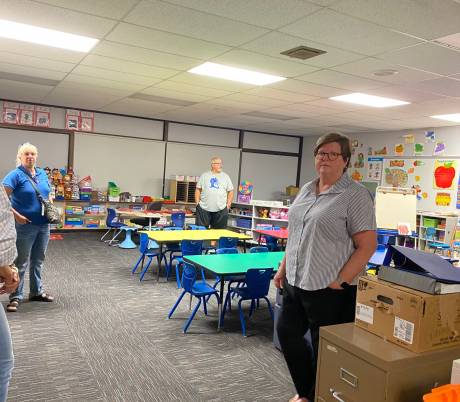
A UPK grant of $672,719 funds up to 112 students — 72 full-day and 40 half-day slots. The district has a waiting list for parents that want full days for their children, and “we are applying for an expansion grant that would convert half-day slots to a full-day slot,” Smith said.
The district is working with Genesee, Orleans and Wyoming counties to support the regional need for preschool students, and there are 28 enrolled in special education at Robert Morris.
A current Student Transition And Recovery (STAR) program has been moved to the third floor, and the cafeteria has been reopened and prepped to provide meals in classrooms and cafeteria style, Smith said. There has been deep cleaning of the kitchen and cafeteria space, a review of the status of equipment and electrical/plumbing infrastructures, and purchases or upgrades of necessary equipment and supplies.
New staff includes four UPK, seven preschool teachers and 11 teacher aides, plus related service providers for occupational, speech and physical therapies; school resource officer, nurse, administrative, custodial and security aide support. The board approved those new positions during Monday’s regular meeting as part of a long list of additional staff for elementary, middle and high schools.
Security aides, many of whom are retired police officers, are throughout the district for extra safety measures, Smith said. They will provide 15 hours a week at Robert Morris, plus the presence of a school resource officer.
Cost of Change
To date, the district has spent $225,000 to get RM up and running, Business Administrator Scott Rozanski said.
Within that total:
- $93,000 will be funded by a UPK grant for classroom furniture and interactive boards;
- $20,000 to be funded by a School Lunch Fund for a dishwasher, garbage disposal, refrigerator and various carts; and
- $112,000 from the General Fund for carpeting, cabling, a copier, classroom furniture, desks, chairs, intercom, dehumidifier, public address system and emergency lighting upgrades.
Registration has been moved from the Robert Morris site to the high school administrative wing to reduce foot traffic, and an administrative office will be available on site near the UPK entrance.
Other work performed has included upgraded cabling, interactive boards, cleaning out storage areas, and transferring viable furniture from Jackson to Robert Morris. Walls have been patched, painted and/or repaired in class and bathrooms, carpeting has been replaced, air and asbestos tests conducted in the basement and library, a new intercom and telephone lines installed, and assorted repairs made to vents, plumbing fixtures, and electrical components and new water lines added as needed.
The first day of school is Sept. 7 for all students.
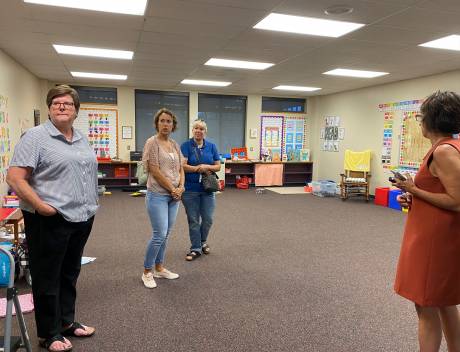

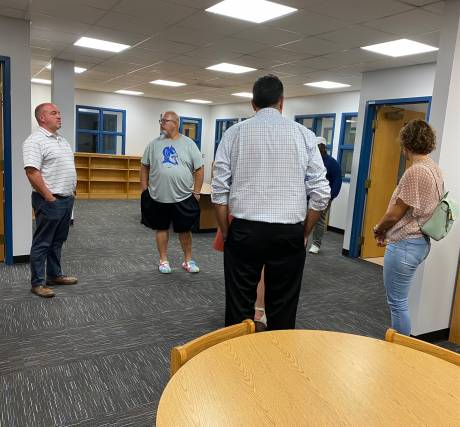
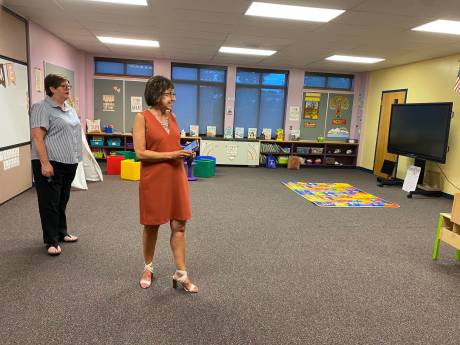
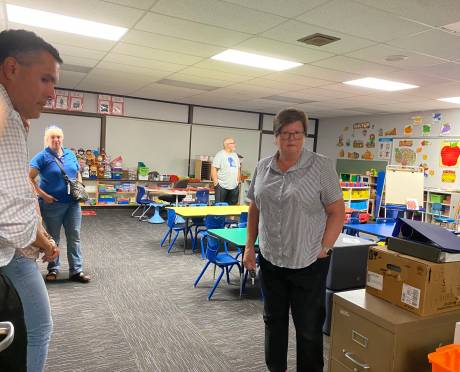
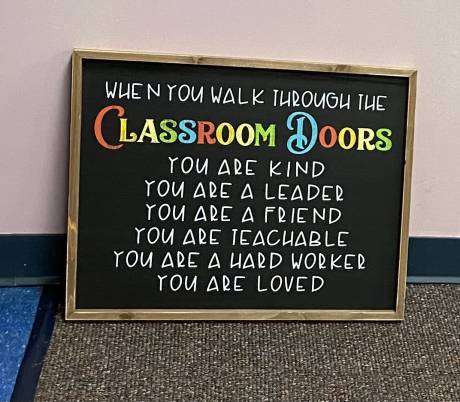
Top photo: City school board member Alice Benedict, left, Superintendent Jason Smith, and board members John Reigle, Jenn Lendvay and Korinne Anderson begin their tour at the east entrance of Robert Morris Monday evening. Trisha Finnigan, executive director of staff development and operations, walks the group through several pre-school and UPK classrooms, and an integrated services room for occupational, speech and physical therapy, shown, as Board President John Marucci takes a peek over a makeshift wall. Photos by Joanne Beck.
